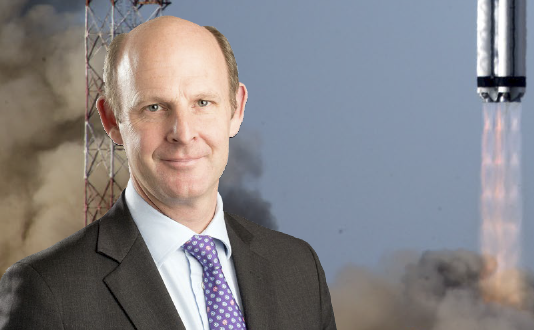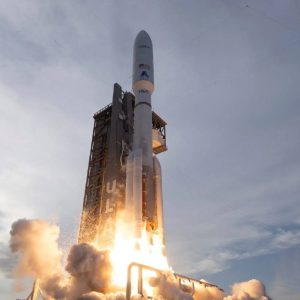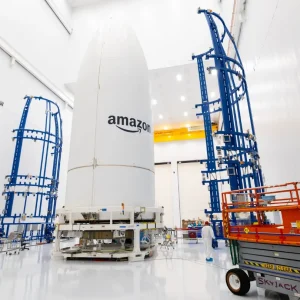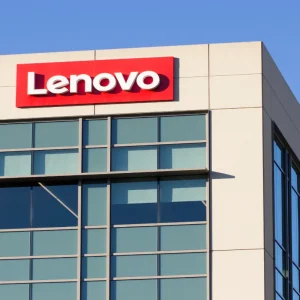
Rocket launches are nerve-racking events. One in 20 launches fails. And when it comes to rockets failure means fireworks, big fireworks.
On Aug 28th 2015 Inmarsat launched its F3 GX 5 satellite. This satellite represents the final piece in the UK satellite telecoms company’s GX (Global Xpress) network. This will deliver high speed satellite broadband to just about anywhere in the world apart from the poles with global coverage from a single operator. Once operational at its 35,000km geo-stationary orbit above the equator, the Inmarsat spacecraft will be able to beam 50MBPS broadband on a global, regional or spot beam basis on the Ka (Kaay Ay) spectrum band.
There is a lot riding on it. Global Xpress is expected to generate $500m in annual revenues by 2020. The company’s revenue mix is changing. The mobile broadband business is rapidly changing. The networks themselves are changing.
A few weeks before the launch I sit with Inmarsat CEO Rupert Pearce in his office above Old Street roundabout in London (aka Silicon Roundabout) I begin by asking him why he is in such a high risk, highly capital intensive business?
"It is high risk in two ways. You have to put a lot of money to work to be in business at all. A satellite costs $300m or $400m US. To launch it costs $150m dollars. So you’re looking at half a billion dollar in up-front investment before you can make one dollar in revenue. And that’s just one satellite that gives you regional coverage," he says.
As it was still some weeks away, what was occupying Inmarsat and its boss at our time of speaking was the G5 F3 launch mentioned above – subsequently successfully launched on Aug 28th from Baikonur, Kazakhstan.
Robust investors required
"It is risk intensive and it is not for the faint hearted. You have to earn the thick end of $1.5bn to earn your first dollar. That’s a big barrier to entry. And although you can insure a launch, something like 5% of all launches end in failure."
Given the risks of failure even before it leaves the ground, what breed of investor is attracted to satellite operation?
"We IPO’d in june 2005 on the London Stock Exchange. For the first 5-6 years we grew at double digit rates so we were a growth star that paid a healthy dividend. Every year we’ve grown the dividend. So we’re seen as having a strong yield. Last year we grew the dividend 5%. We’re a rare company – we attract growth investors and yield investors."
That double digit growth rate has tailed off recently.
"For the last 2-3 yrs we’ve not been growing at double digit rates because we’re coming to the end of life on one technology and looking to move to a new technology. Once we’ve rolled out with Global Xpress we believe we’ll be back to double digit growth," he says.
Another risk in the satellite communications business is the remoteness of its asset.
"You invest all this money in this technology [G5-F3 was built by Boeing] you put on top of a giant firework – and fire it up into space -and then you turn it on. And what you get is what you get. You can’t send a man with a screw driver. Even with the efforts to put the technology on the ground most of the technology is in space."
It is also operating in the most harsh environment imaginable. The front (pointing at the sun) and back of the craft has a 400 degree temperature difference.
"You’ve got sophisticated electronics on a spacecraft, which need to last for a long time in a harsh environment which includes ions, solar winds and debris."
Once turned on the asset has a 15 year life span. Inmarsat has 15 years to generate a return.
The market environment
For an operator like Inmarsat, the communities served value global presence.
Maritime, aviation, media, mining and governments (think military) all are global industries or can require secure, reliable mobile communications in remote locations.
But Inmarsat’s revenue mix is changing. Government is declining with Aviation is seen as a growth opportunity.
Inmarsat was born 35 years ago by 86 countries collaborating and throwing money into a pot to create the global maritime distress and safety service. This established satellite connectivity to ships that is still a free service provided by Inmarsat and has saved countless lives.
But, Pearce says, once you’ve got a pipe to a moving ship there is much more that can be achieved. Now with 50Mbps the ship itself becomes a digital asset.
In the 35 years since its inception, Inmarsat has gone from voice and dial up to true broadband.
The satellite comms system is no longer just there for when a ship gets into difficulties or for occasional crew calling. "It is a fundamental enabler to the era of the smart ship which is completely revolutionising the way ships operate, the revenue streams open to them – their contribution to digital society objectives and to a greener oceans and a greener planet."
The type of services which can be delivered can include everything from OTT content provision, to personal communications, to being the comms infrastructure platform for Internet of Things for maritime applications such as smart engines, ship system monitoring, tracking and routing and many other applications currently under development.
Inmarsat held a developer conference and had hundreds of software application developers attend.
Launch
Inmarsat is a satellite operator. On August 28th its Boeing built $400m GX-5 F3 satellite was successfully launched atop a three stage Proton rocket and Breez booster built by Khrunichev State Research and launched from the Baikanor Space centre in central Kazakhstan.
Being in a network operations centre in the countdown to launch one could feel the tension building.
Fifteen hours and 31 minutes after launch there is spacecraft separation. The spacecraft goes into super synchronous transfer orbit which takes it as far as 65,000km from earth.
The satellite is now being operated by Inmarsat. Six days after launch the satellite is switched on for testing and it is then that the operator learns of any operational problems. It will settle into its 35,000km orbit and be tested before becoming fully operational for commercial services by the end of the year. Commercial airlines are thought be lined up for the services so expect more broadband on your flight soon.
Next page: Airline Tracking
Airline tracking
When Malaysia airlines MH370 disappeared on a flight from Kuala Lumpur to Beijing in April 2014 it was reported at the time the technology exists to track every civilian aircraft in flight.
As well as using satellite comms for civilian aircraft tracking Pearce offers the example of aircraft relaying weather information to planes behind it on the same flight path. Today airline pilots receive a weather report prior to the flight and know what to expect. But once airborne and flying over big open stretches of water they don’t receive further detailed updates. They must react to what they find by, for example, climbing, descending or flying around extreme weather. But, says Pearce, using the Global Xpress system a lead aircraft on a transoceanic route could relay real time weather data to aircraft behind it thus giving better warning and improving safety.
This is the type of commercial application for aviation that Global Xpress will provide because of its global coverage.
On a less critical but equally if not more commercial prospect is cabin connectivity. You may think of long haul flights as providing a break from the connected world but that’s not going to last. Cabin connectivity is a huge market for Inmarsat.
Competitive environment.
The opportunity in satellite mobile broadband is is huge but Pearce recognises the shifting market mean increased competition.
Competitors come from satellite and terrestrial mobile broadband industries.
The good news for Inmarsat and its investors is that the trend in business is mobile broadband moving from nice to have to mission critical.
Global mobile broadband traffic increased 60% last year. Estimates from even conservative market watchers predict 20 billion connected devices within five years.
"There’s an inflection point happening because industries are taking to the power of being on the move. They want to access mobile services on the cloud or behind VPNs and they are saying, ‘this is transformational. This is going to lead to higher pace and agility in my business and I’m going to be driving new revenues through the power of mobile broadband."
Pearce, a lawyer by training, recognises that growth opportunities create competitive environments.
"Very high growth opportunities mean you can expect the competitive dynamics to change. It is going to attract capital and this is what you are seeing in the space sector. Traditional fixed players see growth in mobile broadband and they want a piece of it."
Competition is also coming from unusual places. Oneweb raised $500m from a variety of backers to launch hundreds of low earth orbit satellites to provide broadband to remote areas.
Google is testing the use of balloons and Tesla founder Elon Musk launched SpaceX.
"It is attracting capital because the growth opportunity is so big so we’ve got to respond to fundamental growth dynamics."
Being in the position of having attracted and deployed his capital investment in the infrastructure Pearce points to the potential penalty paid for success for his competitors. "If the demand curve is very steep and the APRU (average revenue per user) curve is flatter, the question is how do you make that work? That’s going to shorten capex cycles," he says.
"It is going to force firms like ours to invest in lowering cost per bit. We’ve seen it in the terrestrial world and it is no different in the satellite world. So how do you make that work.?
Different spectrum
"The move from L band to Ka band gives us huge 2Ghz of capacity and we’re investing to deploy that spectrum far more efficiently around the world. We’ll have more capacity to keep downward pressure on cost per bit and we’ll keep raising the capacity of our network. That’s how we meet the challenge."
[In the satellite game] if you snooze you lose because the demand side from the customer is forcing it to move, and that’s not a how the traditional satellite world looked until very recently.
Pearce says: "It has been a world where you put a satellite up there and you have a 15 year annuity. It is not going to look like that anymore. "
Profile
Inmarsat (International Marine Satellite) was launched in 1979 in order to improve safety at sea through better satellite communications as a collaboration between 80 different countries who wished to set up a satellite communications systems to communicate with ships far out at sea.
Today the company is listed on the London Stock Exchange and recently made it into the FTSE100.
For the half year to 30 June 2015 revenues were $616m with wholesale Mobile Satellite Service revenues up 4% to $403.8m. EBITDA was $342m down from $369.7m with profit after tax of $131m from 2014’s $136m.
In Q2 total revenues were $311m (2014 $307m)
To give an idea of its revenue mix – though this is changing, maritime down $5.3m to $147.3m (-3.5%); Government down $10.1m to $70.4m (-12.5%); Enterprise up $0.5m to $40.4m (+1.3%); underlying growth (excl. disposal) +8.9%; Aviation up $7.0m to $30.8m (+29.4%); $17.5m from LightSquared (2014: $1.8m).
Wholesale Mobile Satellite Service (MSS) revenues $205.6m, up 4.8% (2014: $196.1m)
Read CBR September Magazine for more CEO and top Exec Interviews






